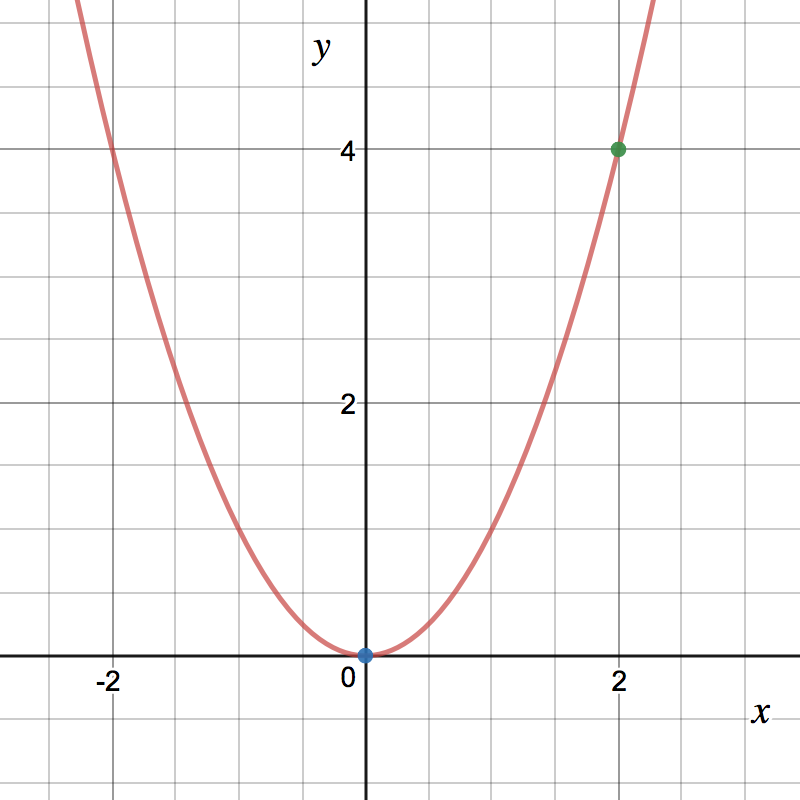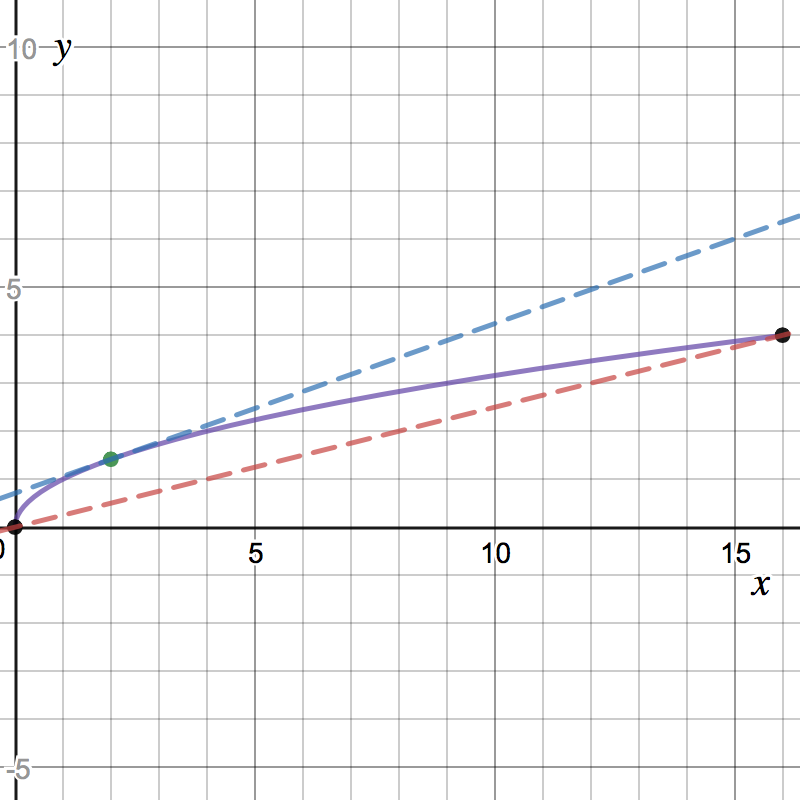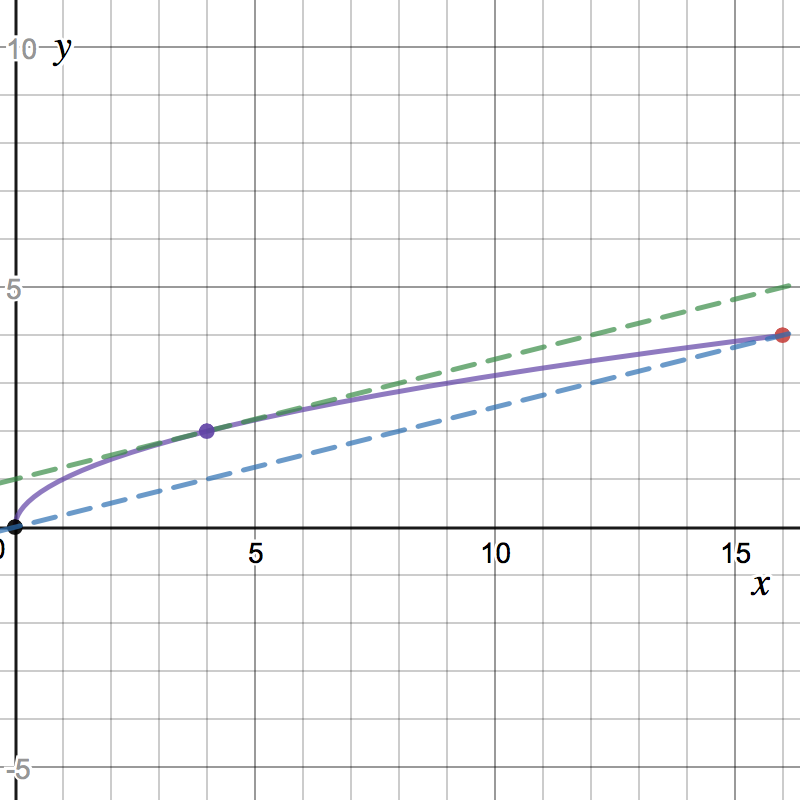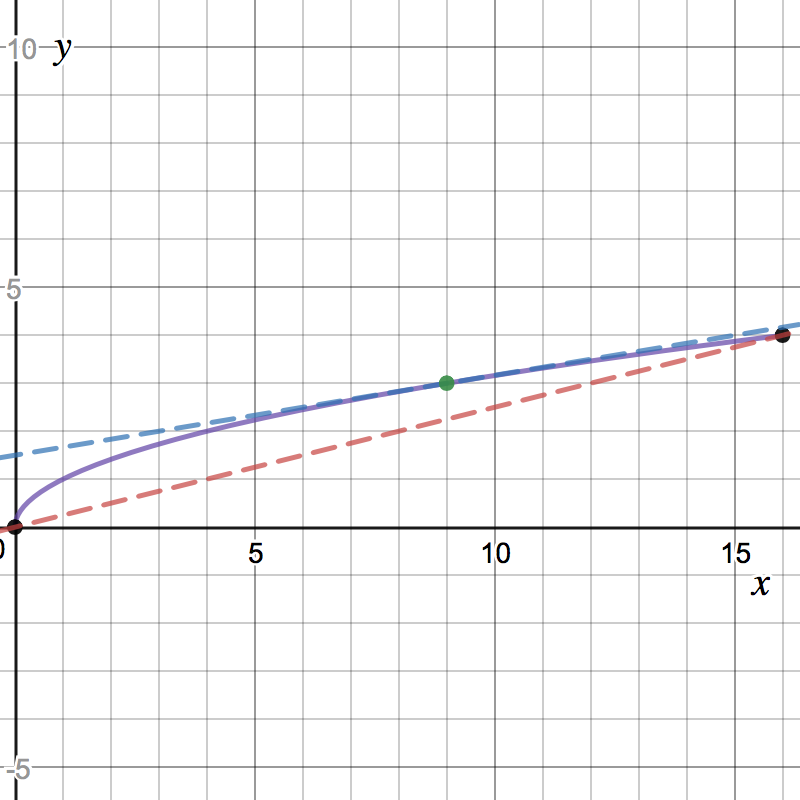Recap Video
Take a look at the following video which recaps the ideas from the section.
_
Example Video
Below is a video showing a worked example.
Problems
We have two new theorems:
Rolle’s Thoerem Suppose is continuous on and differentiable on , and that .
Then there is a point in with .
Consider on the interval .
- What is the slope of the secant line between and ?
- Here is the graph of . By inspecting the graph, at what point in does it seem like the slope of the tangent line is the same as the slope of the secant line found above?

- Find the such that the tangent line to the graph at matches the slope of the secant line between and .
Consider on the interval .
- Do the hypotheses of the MVT apply? Yes No
- The -value satisfying the conclusion of the MVT is .
- Which of the following illustrates the MVT and your answer to the
previous part?



Consider on the interval . Do the hypothesis of the MVT apply?
Yes No
Which of the following are consequences of Rolle’s Theorem for an
everywhere differentiable function ? Select all that apply.
Show that has at most one real root.
From the previous problem, we know
that Rolle’s Theorem tells us that between any two roots of there is a root of
(i.e. a horizontal tangent line to the graph of ). This means the number of
roots of is at most one more than the number of roots of (make sure you
think through this). Notice
Are there any points where ?
Yes No
This tells us has no roots (in fact, for all ). Therefore, Rolle’s Theorem tells
us that has at most one root (if it had two, there would need to be a root of
between them, but there is no such root of ).